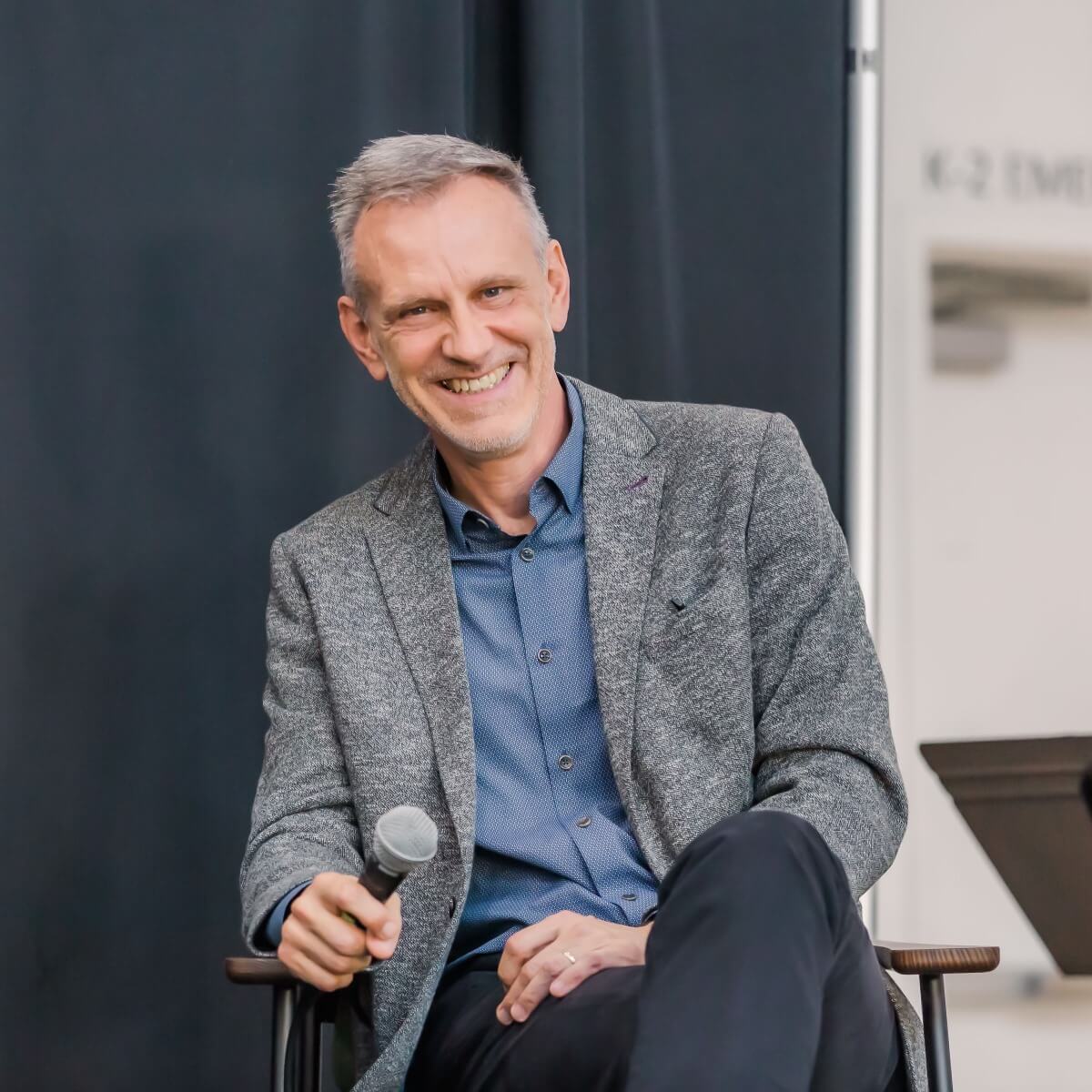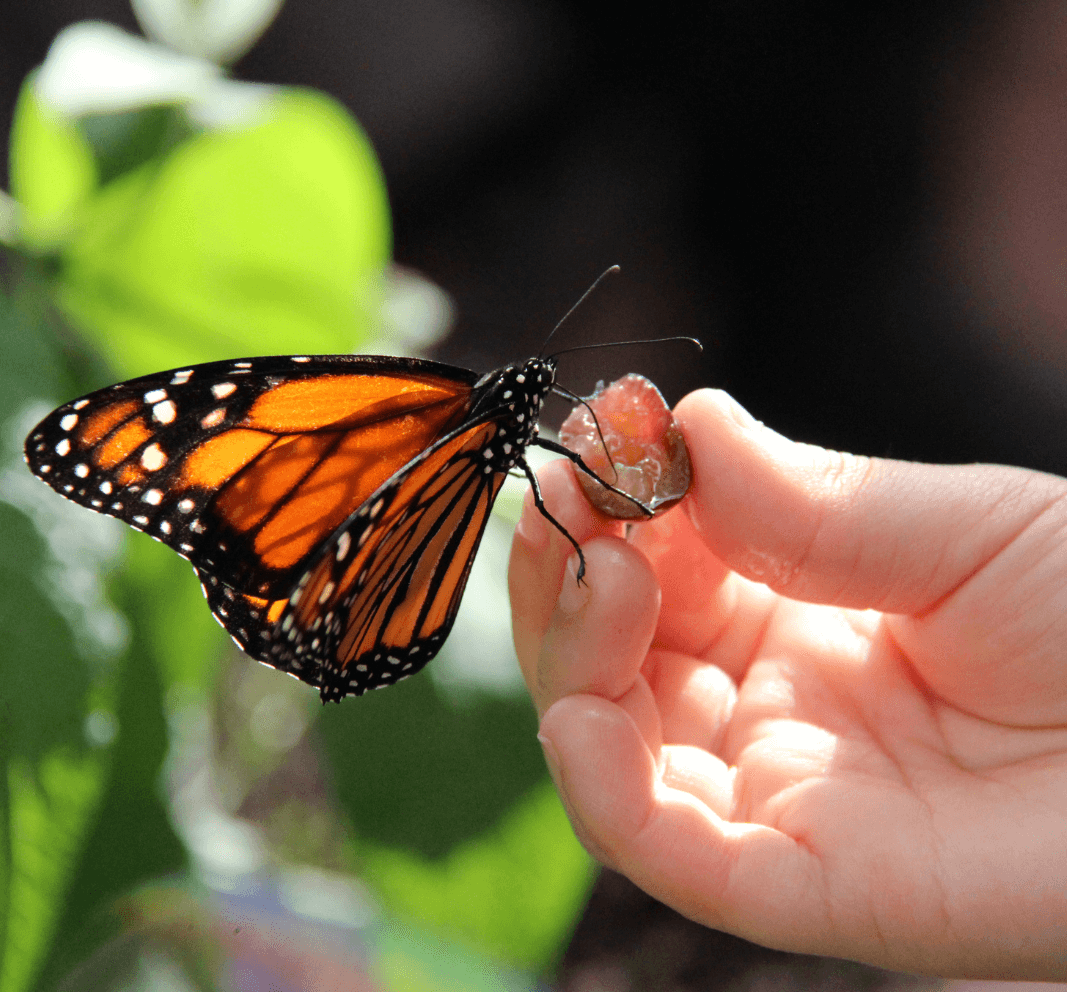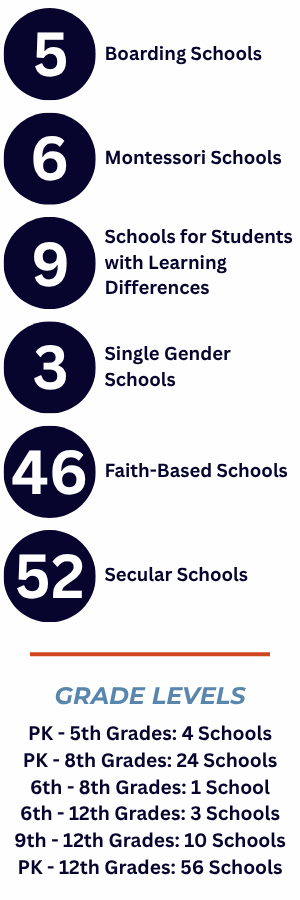People, Practice, and Possibilities:
A Monthly Guide for Educators
A Monthly Guide for Educators
Mike Hanas, Coach in Residence
 Mike Hanas, born and raised in Chicago, loves to learn and has been a leader in education and leadership development for nearly 40 years. After falling in love with the classics as a high schooler and an undergraduate, Mike brought his passion for learning to work in schools. He has worked as a teacher and leader in six different independent schools (two boarding and four day), including 20 years as a Head of School in Durham, NC, and in San Francisco, CA, and most recently as an Interim Head in Santa Rosa, CA. Mike's sincere belief in (a) the power of reflection to catalyze wisdom and (b) the deep potential of others led him to launch Furthering in 2018 to advance learning, leadership, and service through individual and team support. His executive coaching and consulting clients include Heads of School, Board Chairs, Boards of Trustees, and Senior Leadership Teams.
Mike Hanas, born and raised in Chicago, loves to learn and has been a leader in education and leadership development for nearly 40 years. After falling in love with the classics as a high schooler and an undergraduate, Mike brought his passion for learning to work in schools. He has worked as a teacher and leader in six different independent schools (two boarding and four day), including 20 years as a Head of School in Durham, NC, and in San Francisco, CA, and most recently as an Interim Head in Santa Rosa, CA. Mike's sincere belief in (a) the power of reflection to catalyze wisdom and (b) the deep potential of others led him to launch Furthering in 2018 to advance learning, leadership, and service through individual and team support. His executive coaching and consulting clients include Heads of School, Board Chairs, Boards of Trustees, and Senior Leadership Teams.
 It was at the foot of the Lincoln Memorial that I most recently noticed myself standing still.
It was at the foot of the Lincoln Memorial that I most recently noticed myself standing still. I was in Virginia, not far from the Capital, for Thanksgiving this year. A broken pinky toe turned my turkey trot into a walk around the National Mall. On a beautiful morning. Blue sky. Sunshine. Cold, crisp air that made me feel alive. And quiet.
I suppose all of those conditions contributed to my pause, but I also couldn’t help but note that something about DC moves me—to stand still. It’s not the politics, of course; it’s not that I consider the individuals honored with monuments and memorials perfect heroes. In fact, maybe it’s all the imperfection and the possibilities, dreams, aspirations, and ideals that activate something in me.
And then it reminds me of school. It reminds of the crucial responsibility we have—as teachers, coaches, advisors, administrators, heads, and trustees—to manage pace.
Managing Pace
Managing pace never shows up in a job description, and yet it is on our minds as we make countless decisions each and every day. Decisions about our students’ readiness to move on. About our cast’s or team’s readiness to perform—or to rehearse one more rep. About our school community’s readiness for one more change.
As educators and school leaders, we could benefit from more in-depth exploration of our own pace through work and life.
In a 2013 Harvard Initiative on Learning and Teaching (HILT) lecture on “Essentials,” Harvard art historian Jennifer Roberts begins:
"During the past few years, I have begun to feel that I need to take a more active role in shaping the temporal experiences of the students in my courses . . . I need not only to select readings, choose topics, and organize the sequence of material, but also to engineer, in a conscientious and explicit way, the pace and tempo of the learning experiences. When will students work quickly? When slowly? When will they be expected to offer spontaneous responses, and when will they be expected to spend time in deeper contemplation?"
In the face of external pressures, social and technological, that seem only to speed things up, Roberts asks how we might give our students “permission and structures to slow down.” If we search carefully, we may find reference to pacing in a Mission Statement, such as Trinity School of Durham and Chapel Hill’s: “... providing a rich yet unhurried education.” But let’s face it, schools aren’t in the habit of telling their communities that everyone should slow down. I wonder how we can give permission and structures to ourselves and one another to manage our paces even just a little better.
But to be clear: the goal transcends rest.
Immersive Attention
In an insight I find powerfully compelling, Roberts notes “that because vision itself is instantaneous, we can confuse art with being so as well. But a true experience of a painting (or memorial or monument) can only develop with extended, immersive attention.” As an art historian, Roberts might suggest or assign a three-hour encounter with a painting. As my friend and colleague Rich Nourie, Interim Head of Friends Seminary in New York City, notes, “That kind of immersive attention, of decelerating, is exactly what we provide for students in their experiences of silent Meeting for Worship, where the object of attention is not a painting but one’s own inner life.”
These three weeks of December leading up to a break will provide no shortage of things to do, places to be, need-to-haves, and distractions along the way. I know of no one-size-fits-all approach or tool that operationalizes immersive attention, but I encourage you to ask what that looks like for you. Consider these three prompts:
- When have you been that present, that mindful, and what made it so?
- What might you learn from a colleague—or students—by asking them how they create the space for presence and immersive attention?
- What do you notice when you do so?
Attention as a Moral Act
The psychiatrist Ian McGilchrist argues that “Attention is a moral act; it creates, brings aspects of things into being.” When so much of what we experience in the weeks ahead will be imposed upon us, let's make room—to ensure that more of what we experience can arise from within.
In this month of flurried activity and distraction, I wonder: What would it take to grant permission, provide structure, and even claim for ourselves and one another the time and space to slow down? If we stand still – not to rest but to manage pace — we may perhaps bring into being, or at least reconnect, with a greater ideal than that which is immediately evident. And we may be reminded that we are a part of something larger than ourselves.
December’s best wishes!
What Chapter are We In?
Between Halloween and Thanksgiving, that is.
You’ve left August prep far behind, oriented new colleagues and families, welcomed back returning community members, established classroom and team cultures and routines, orchestrated Back-to-School Nights, and navigated Teacher-Family Conferences. Phew! That’s a lot—and it isn’t even a complete list. Nonetheless, in more than one school community of which I’ve been part, reaching this point in the year has led school veterans to state things like, “The year has flown by already.” Others describe the stretch ahead as among the most productive of the school year—built on a strong start. As one HOS asked, “How, then, do we keep density from depleting us?”
A Simple Prompt: What would it take?
I’m sometimes surprised by how often I find myself using and appreciating the principles of Backwards Design. For example, I wonder how to create space to consider a question like this: On the last day before Thanksgiving Break, what would it take to make the weeks before then more deeply satisfying and even energizing?
Here are a few more specific questions to consider:
- What would it take for a team, one of which you’re part, to end its regular meetings five minutes sooner to allow for a coffee, tea, water, or stretch/bio break?
- What would it take to build a walking meeting or room for a breath of fresh air into your day?What would it take to engage a colleague with whom you know something’s not quite right?
- What would it take to get some feedback on a new approach you’ve been trying—or advice on a challenge that makes you feel stuck?
- What would it take to make the budget-setting process more visible?
- What would it take to build time to reflect—to deepen learning—into your week?
Steward Resources and Celebrate Wins
I admit that, when I was teaching and serving in various leadership roles, I didn’t think of a school year in chapters. However, I wonder if paying a bit more attention to the chapters in a year can be helpful. You’ve completed a major chapter of the school year. Many of you have already begun the next chapter, the one in which you set budgets, determine professional development opportunities, and consider (or reconsider) your work and personal goals for 2026 and beyond. I hope one or more of the questions above proves useful as you flip through these chapters of the school year. Most importantly, I hope we all take this moment in the year to care for ourselves, reflect on our shared purpose, and steward our resources well. And finally, I leave you with this last question: What would it take to acknowledge the good work that’s been done to bring our mission to life and to celebrate – perhaps even savor – our achievements so far?
Congratulations on making it through Halloween and well on your way to the New Year!
Employing the Coaching Mindset
Imagine a colleague slumps into your classroom or office and releases a frustrated sigh. “I’m stuck. I’ve been trying for months—it feels like years—to get this parent’s behavior to change, but nothing works.”
Believe it or not, the question “What’s awesome about that?” is one I find myself asking often these days in my coaching practice. If you find value in adopting a coaching mindset — or at least experimenting with it — I'd like to share some reflections on coaching, particularly the practice of being present and curious.
While I consider my training to become a Certified Executive Coach to be a great gift, I believe that each of us can benefit from a coaching mindset that fosters presence, curiosity, and a desire to help. Practicing with even just a few tools might prove useful to your teammates, colleagues, and anybody wanting to further their effectiveness.
Being Present: Noticing
I believe there’s great benefit in “catching things going right.” Next time you happen upon a classroom that’s humming, or witness a rehearsal or performance in which learning and community are fully alive, or experience a meeting exceedingly well-run, ask the person in charge, “What are you noticing?” Afford them the opportunity to reflect on what’s working and why? And then ask, “What are you noticing in you?” Their reflection -– and your presence to witness what they share — will fuel the learning and trust between you.
Meeting Them Where They Are
A second benefit worth naming comes from asking a person to identify what kind of support they need. Is it a place to vent, a straight answer to a question, or an immediate option to consider? Is it a thought partner or a peer or mentor’s advice? Or is it coaching—through practices like listening, asking questions, and looping—that helps the one seeking help discover new possibilities within themselves? A question like, “What kind of help would be most useful?” – with specific options offered – increases the odds of meeting others where they are and being of use.
Being of Use: Open-Ended Questions
Short of a request for coaching per se, a third benefit takes shape in asking questions like these listed below, which create space for unpacking a challenge or pursuing an opportunity:
- What’s most on your mind?
- What’s the real challenge for you in that?
- What might success look like?
- What’s the easiest next step?
- What would it take to try that, to begin?
To further widen the space for ideas — and generate some energy along the way — I encourage the use of what’s sometimes called “Opposite Thinking.” For example, in response to our “stuck” colleague from the scenario above, you might ask for bad ideas. That’s right, bad ideas. Like what, you ask? How about resignation, alcohol, yelling, silent treatment, threats, and more—you might be surprised by how long this list can get and the relief it affords. And then I suggest taking a close look at the items on the list and asking: What’s the good in any of these “bad” ideas? Or . . . What’s awesome about the fact that this teammate has been “trying for months—it feels like years” and hasn’t given up?
I’ve been told it’s a mistake to make it sound like employing a coaching mindset is easy and always effective. It’s not. And it’s not far removed from the beautiful questions: “What are you noticing?” “What kind of support do you need?” or simply, “ How can I help?”
 Where do you go to catch a spark?
Where do you go to catch a spark?
I’ve been asking that question a lot since I saw the film “A Complete Unknown.” I can’t claim to have been a lifelong fan of Bob Dylan, but I loved the film.
I especially loved the early scene where Timothée Chalamet’s Dylan visits an ailing Woody Guthrie in a dim, dreary infirmary. At Guthrie’s side sits Ed Norton as Pete Seeger, who asks Dylan what brought him there. The young Dylan replies that he came to see Woody, hoping to catch a spark.
I’ve asked many family members, friends, colleagues, and even clients the same question: Where do you go to find a spark?
I’ve found more sparks than I could have hoped for while working alongside individuals and teams as they launch the 2025-26 school year.
As educators, we know the challenges will come, but we begin the school year with heads full of plans and hearts full of hope. And the launch asks much of us—time, focus, patience, collaboration, and recommitment—and promises much in return: connection, discovery, and, if we’re open to it, awe.
Dr. Dacher Keltner, who studies awe, defines the word not as something reserved for mountaintops or masterpieces, but as a response to anything that expands our sense of what’s possible and connects us to something larger than ourselves. He believes that awe softens the ego, enhances well-being, and invites collaboration. He suggests that awe is not a distraction from the work—it is the work, reframed.
He introduces eight “pillars” of awe, i.e., where to find it:
- In acts of moral beauty that remind us of human goodness
- In the collective effervescence of shared purpose and belonging
- In quiet moments surrounded by nature
- In the stirrings of our souls through music
- In the beauty of art and design
- In sacred rituals and moments of spiritual connection
- In witnessing the sacred transitions of birth and death
- And in the big ideas that reframe what we thought and knew
Or, as we educators know, we find awe in schools.
So here’s an idea for this new year: keep an awe inventory. Not a bulletin board or assessment tool, just a personal record of the moments that give you pause. The student who asks a question no one saw coming. The laughter in the hallway between bells. The way a lesson unexpectedly lands. A morning light on an empty classroom. A seemingly simple “Hello” that you know means more.
What if these aren’t distractions? What if they’re reminders of why we do what we do? Awe, says Keltner, doesn’t just elevate our mood—it expands our thinking. It helps us make room for complexity, for grace, for each other.
In the poem Make the Ordinary Extraordinary, William Martin writes: “Do not ask your children to strive for extraordinary lives… show them the joy of tasting tomatoes, apples, and pears.” That line reads differently when you teach. It doesn’t mean we ask less of students—it means we show them how to look more closely. How to find meaning not just in outcomes, but in attention.
Educators know in our bones that learning isn’t just about acquiring knowledge, but also about enlarging our capacity to wonder. Still, it’s easy to forget in the blur of schedules, goals, and emails. But we can choose to notice what notices us back. And in doing so, we model for students a different way of moving through the world—not driven only by achievement, but by curiosity and care.
So as the year begins, I invite you to keep your own awe inventory. Just a mental list, a quiet practice. Five seconds to say: “That moved me.” No need to justify or explain. Just name it. Honor it. Savor it.
Because awe isn’t a reward for finishing the work. It’s a companion that makes the work worth doing. And in schoolhouses, classrooms, everywhere, it’s waiting to be noticed.
Do not ask your children
to strive for extraordinary lives.
Such striving may be admirable,
but it is the way of foolishness.
Help them instead to find the wonder
and the marvel of an ordinary life.
Show them the joy of tasting
tomatoes, apples, and pears.
Show them how to cry
when pets and people die.
Show them the infinite pleasure
in the touch of a hand.
And make the ordinary come alive for them.
The extraordinary will take care of itself.
William Martin
People, Practice, and Possibilities: A Monthly Guide for Educators
“A great beginning is not about perfection, but connection. Teams that start with empathy build strength that lasts.”
— Original, inspired by Brené Brown’s work on vulnerability and leadership
What’s your one big thing?
Okay, what I really mean is what are your three big things—in three categories?
Kudos to Leah Lambert of the NCAIS team, who came up with the title: People, Practice, and Possibilities: A Monthly Guide for Educators. I appreciate that she did so in response to my expressed interest in applying these three lenses in questions, suggestions, and reflections I share here.
Perhaps my reason for doing so is obvious. In case it isn’t, and because I believe it’s that important, my forty years in independent schools have made me well aware of just how much there is to do—more than we can ever fully get done. But my experiences in day and boarding schools, faith-based and secular, Pre-K - 12, secondary, and K-8 have made me every bit as aware of the importance of our ability to work more effectively with others and to enhance how we do our work. You know it, too. So, how do we make what we know matter?
In August, as you set the stage for and then open the 2025-26 school year, I invite you—implore you—to consider your three big things.
- What’s one way we, as team members, will fortify the connective tissue between us? How will we better equip ourselves for the next tragedy, headline, or moment when we simply disagree?
- What are specific norms or touchstones we will commit and return to when we meet, make decisions, and share responsibility as a team?
- What's the one program or experience we simply must initiate or strengthen to make the experience for teachers, students, and the school community better?
“When a team begins with shared purpose, every challenge becomes part of the mission—not a roadblock.”
— Inspired by Simon Sinek’s ‘Start With Why’
I’d love to know what you come up with.

